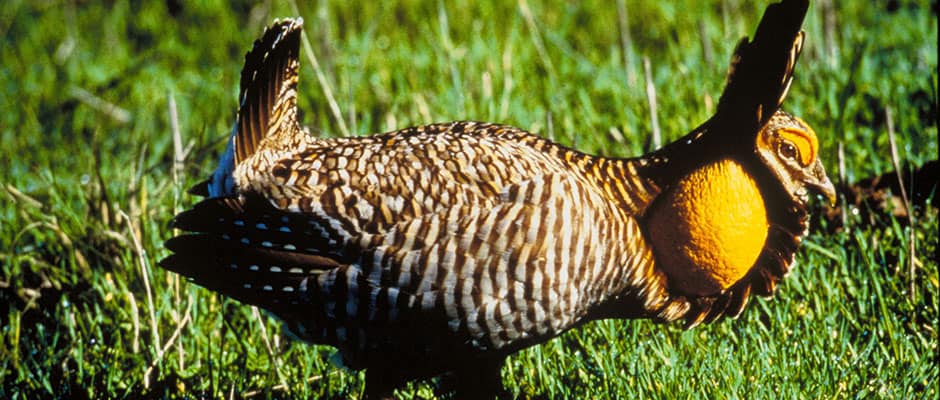Share this article
Fire Ants Limit Attwater’s Prairie Chicken Survival
Small but dangerous to insectivores, invasive red imported fire ants (Solenopsis invicta) could be negatively impacting the brood survival of critically endangered Attwater’s prairie chickens (Tympanuchus cupido attwateri), according to a recent study.
The study, published in the Journal of Wildlife Management, showed how ants have been reducing insect populations in Texas since they arrived there in the late 1960s and early 1970s — insects that the prairie chickens consume for survival. “If fire ants indeed are impacting insects, it’s very likely they are affecting other insectivore species as well,” said lead author of the study Mike Morrow, a wildlife biologist at the Attwater Prairie Chicken National Wildlife Refuge and a member of The Wildlife Society.
When Morrow and his team found that the birds’ brood survival was poor and limiting their progress to recovery, they reviewed the literature that indicated fire ants had a substantial impact on insect abundance in habitats in Texas. In fact, previous research also showed a correlation between fire ants and bobwhite population trends, Morrow said.
With partners from Attwater Prairie Chicken National Wildlife Refuge, the Nature Conservancy of Texas, Texas A&M University Department of Entomology and a number of others, Morrow and his team chose five different locations within the Attwater’s historic and current range, treating certain locations with Extinguish Plus, an insecticide bait that specifically targets ants. They treated 500-acre pastures from helicopters during the fall of 2010 and 2011.
During the spring of 2011 and 2012, the team assessed the insects’ response to areas treated with the insecticide bait and found that there was a 27 percent increase in insect abundance in these areas. Then, they found that survival rates of broods that spent their entire time in the fire ant treated areas were twice as high as the ones that spent none of their time in the treated areas. This demonstrated an indirect effect of fire ants on brood survival, according to Morrow.
“Fire ants are ubiquitous across the southeastern United States. They’re here to stay,” Morrow said, adding that managers can use this insecticidal treatment that was used in the study to control the invasive species. “The downside of this kind of approach is that because fire ants are so ubiquitous, they reinvade pretty rapidly within a year or 18 months or so following treatment. One has to re-treat fairly frequently.”
This is where Morrow hopes to do more research. His goal is to find the optimal treatment interval to support an insect population that can provide enough food for Attwater’s prairie chickens. Researchers have also begun introducing bio-control agents for fire ants — or natural predators meant to decrease invasive species populations.
“The hope is down the road that a combination of those kinds of applications and mechanisms as well as insecticides can be used at least once on a localized basis to reduce fire ant populations,” Morrow said.
Header Image:
An endangered Attwater’s prairie chicken inflates its orange air sacks on the sides of its neck as part of a spring mating ritual at the Attwater’s Prairie Chicken National Wildlife Refuge in Texas. In a recently published study, scientists found red imported fire ants could have a negative impact on the prairie chicken’s brood survival.
Image Credit: U.S. Fish and Wildlife Service/George Levendowski








